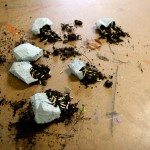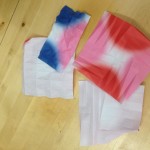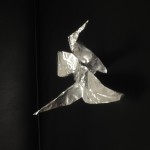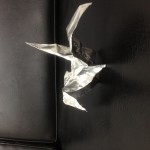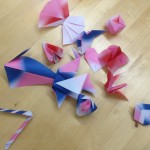I made an origami tessellation which is suspended below a bag of water. The water bag has been punctured in multiple spots, each hole correlating to a major cultural hub throughout history. The water drips onto the tessellation, filling the folds and causing subtle sounds and movements. Eventually the paper will dissenigrate as it becomes oversaturated and these progressive regions can no longer support how rapidly they are growing.

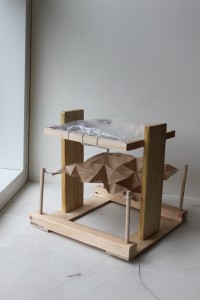
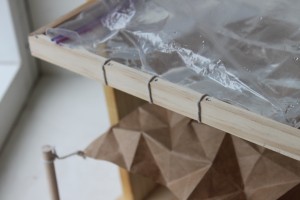
Laid out a 22″x30″ white stonehenge paper, cut it into four pieces of quadrangle, and started exploring every possible way to transform it into a sculpture.
The work consists of four steps representing the concept of circulation, inspired by the ideas of “blank slate,” “Karma,” “The Law of Nature,” and so on.
Each step represents a state of circulation. Starting out from a long zigzig torn piece of paper, in a counter clockwise direction, it begins to explore its ways to build itself, grows gradually, moves onto next level and another, reaches eventually the staring point, and keeps circulating.






Rather than forward progress, I chose to represent a backwards progression. Beautiful gem or stone-like objects decay and fall apart. They spew the earth that they came from and will return to, while maggots aid in the process.
I think for this project, I spent a lot of time thinking about the concept, and maybe not enough time physically creating the piece. Thinking about progress led me to think about lack of progress, and how people can often have a lot of potential, but then don’t actualize it because of laziness or other problems. Which led to the garbage can of given up dreams, which is filled with origami stars, scraps of paper, as well as scraps from making the project itself. I definitely overestimated the sturdiness of my layered Matte Medium membrane, and if I decide to use that technique again, I’d have to use a lot more layers to get the structure I wanted. So I guess this assignment has been a learning experience and has helped me progress as an artist.
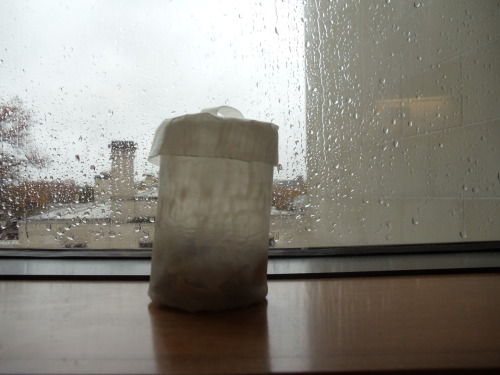
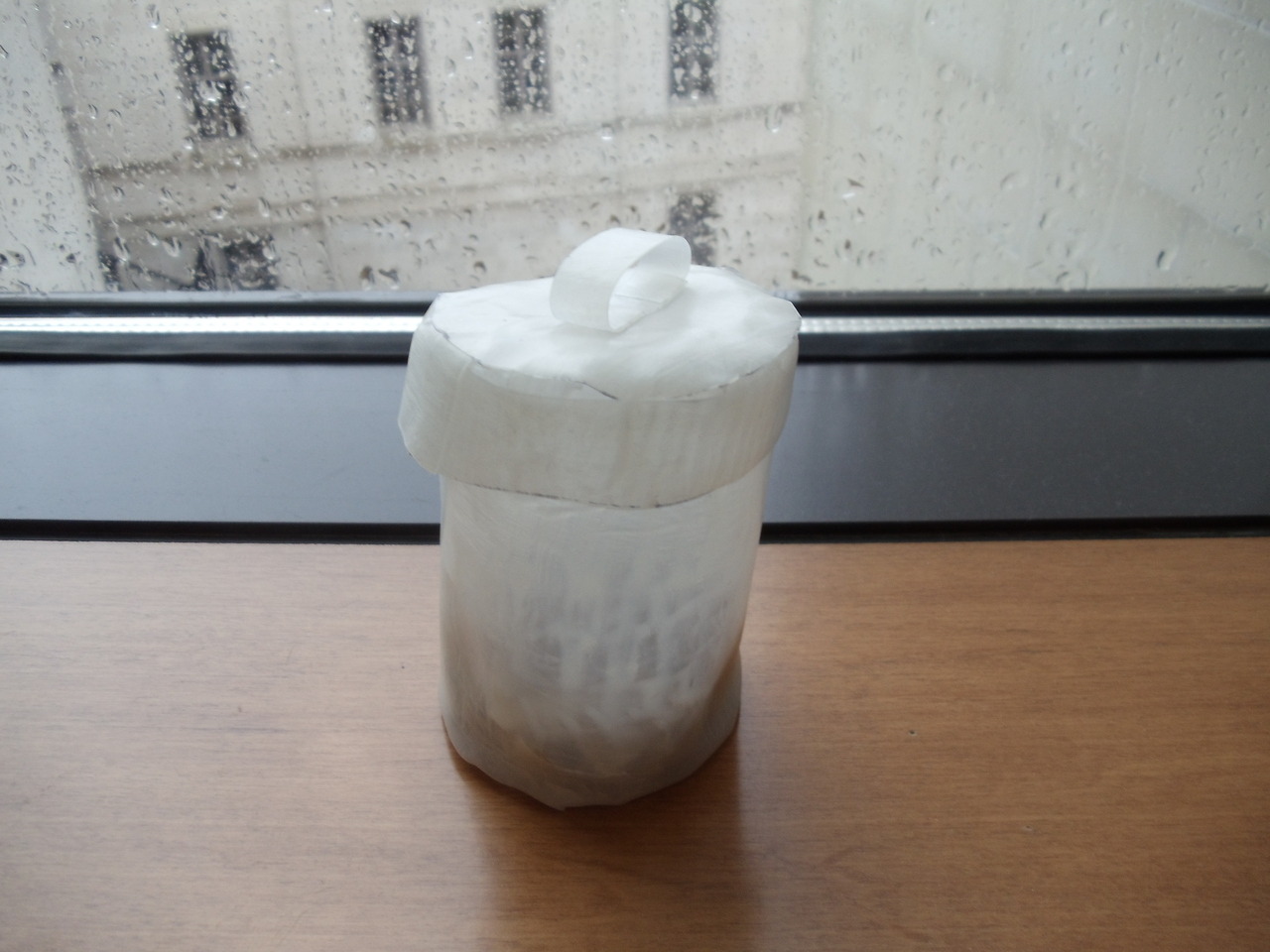
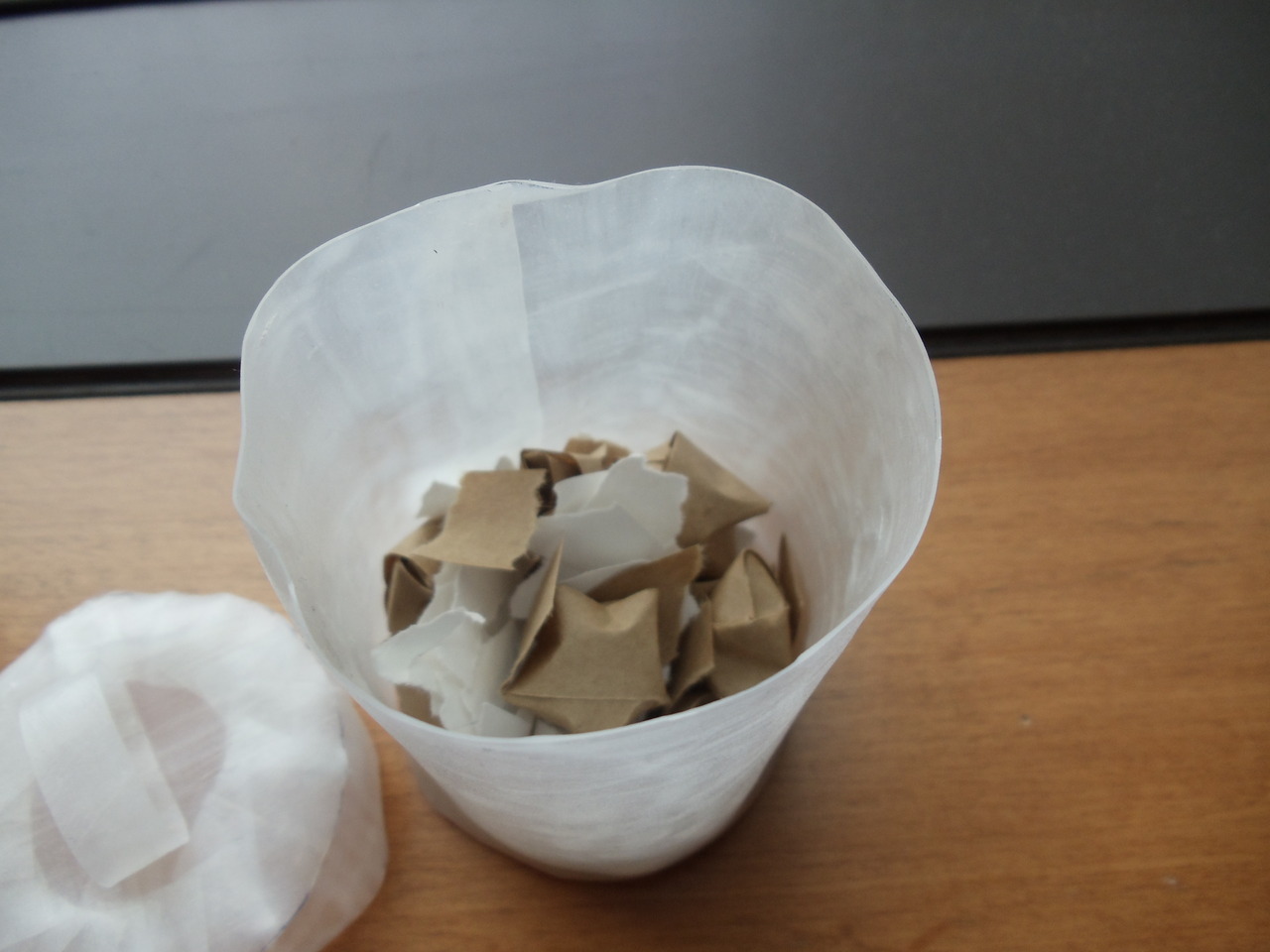
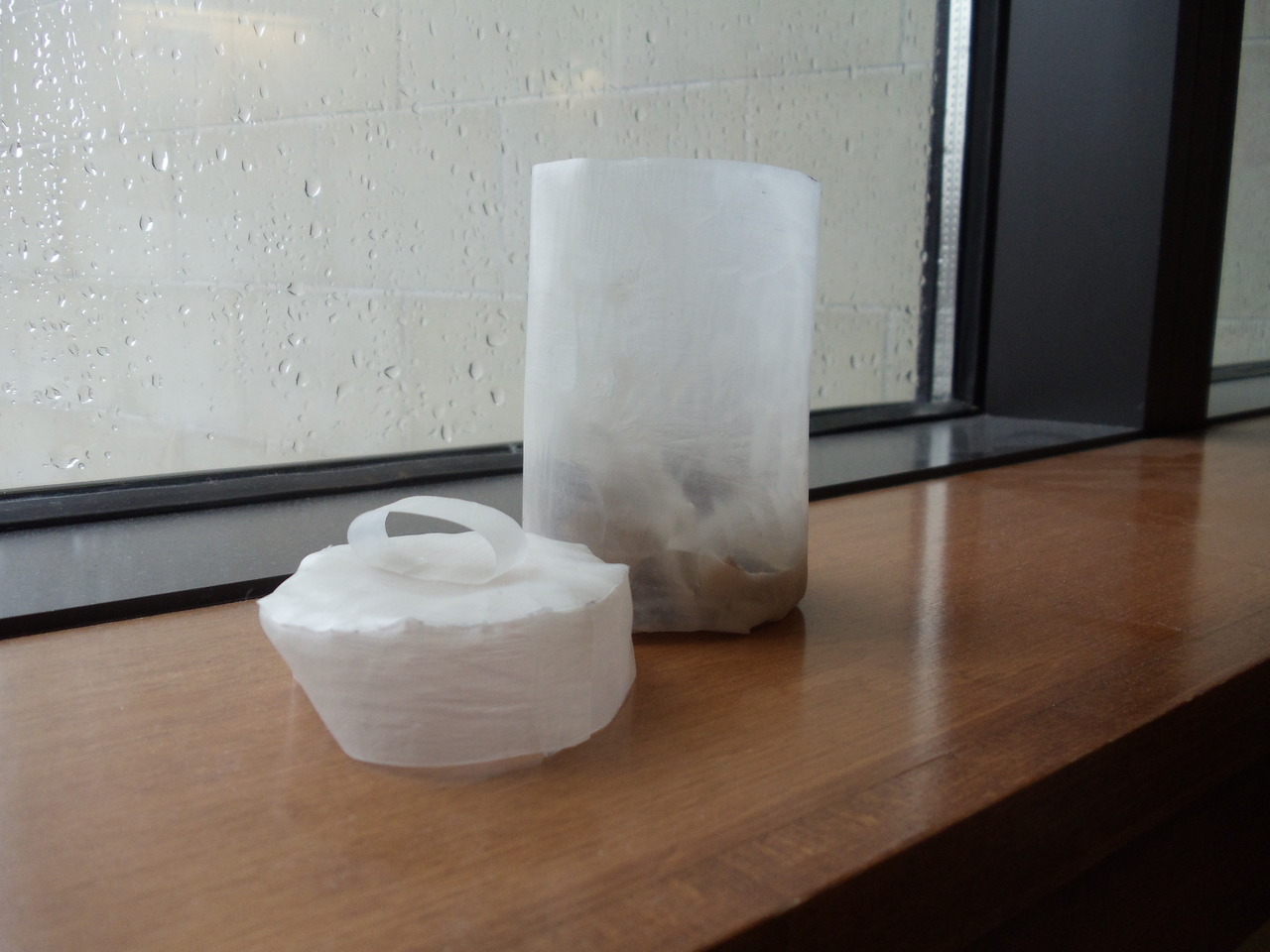
Raised in Korea, I’ve been very familiar with origami since I was a child. When the assignment was given, I tired to find the solution in the original form of origami and folding, and I realized that I am repeating something. I got a feeling that I was stuck, so i gathered all the origamis that i made for this project and tried to find the clue where i was stuck, and I realized that they were all made out of origami paper. I decided to change the material. I thought of many different materials and decided to use Aluminum foil, and chose a crane as a subject, because that is what I think the most basic definition of origami. The Foil Crane that I created theoretically should look stronger than paper crane, but it actually looks more fragile because of its tangibility.
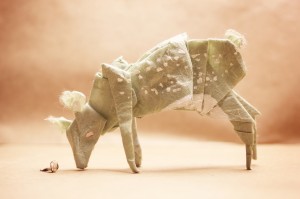

In thinking about progress, I was immediately attracted to the process of analyzing the progress we have made in order to predict the behavior of things to come.
(more…)
Many of the 3d models you find in Google 3D Warehouse and Thiniverse will be too complex for folding.
This article describes a technique for reducing the number of polygons in the mesh. It involves downloading a free program called MeshLab (available for OS X and Windows). Follow these steps:
- Download the model in SketchUp format from the 3D
- Open the model in Rhino, Export the file as a “.obj” file (just as you do for opening it in Pepakura)
- Open the .obj file in MeshLab and follow the instructions in the above article
- Save the new/reduced mesh as “.obj” and continue wtih this file in Papakura
With this technique, I was able to take this model of a hand from the Google 3d Warehouse

and reduce it to this:

Which I was then able to unfold with Pepakura, far more reasonably:

Some seriously gorgeous furniture design by Elisa Strozyk:
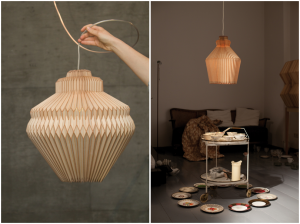
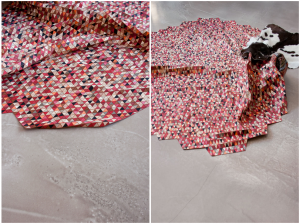
Can we all get an appreciative ‘damnnnnn’ for this?
Her site is here. Check it.
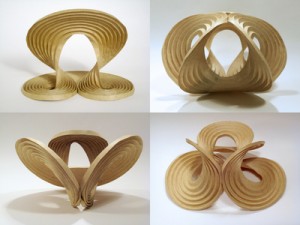
Some interesting resources I came upon discussing the creation of curved origami surfaces:
http://www.graficaobscura.com/huffman/index.html
Some examples of and directions for creating basic curved elements
http://graphics.stanford.edu/~niloy/research/folding/folding_sig_08.html
Informative page on modelling the behavior of curved paper or fabric
I figured I’d start my origami experience with something basic, so I decided to show you all how to make paper stars. They’re really easy and fun, and I ended up making a whole lot while watching “Between the Folds.”
http://www.origami-fun.com/origami-lucky-star.html










